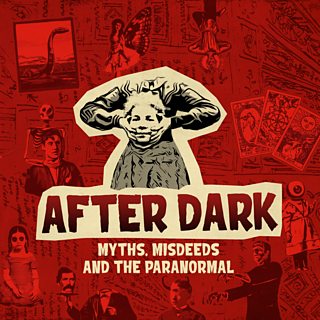Unveiling the Illuminati: The Real Society Behind the Myths and Conspiracy Theories
There really was a secret society called the Illuminati that aimed to create a New World Order. In this episode of After Dark: Myths, Misdeeds & the Paranormal, The team lifts the curtain and discovers the real life secrets of the Illuminati and the monstrous myth they became.
Maddy Pelling and Anthony Delaney are joined by Michael Taylor whose new book is called Impossible Monsters: Dinosaurs, Darwin, and the War between Science and Religion and who is working on a full length history of the Illuminati.
So, where did this secret society come from?
1. The Illuminati were founded in 1776 by a disgruntled scholar.
He was a 28-year-old called Adam Weishaupt, a professor at the University of Ingolstadt in Bavaria. This era was a high point of the Enlightenment in Europe, which gave rise to a new kind of rational, secular thought. “[Weishaupt] was becoming increasingly frustrated with the control that former Jesuit priests were exerting, not only on the university but on his career,” Michael Taylor explains. “He decided that in order to give expression to the kind of enlightenment that he wanted to see percolate throughout Germany and throughout the world, he would form a secret society, within which he and his friends and his students will swap ideas about how to change the world in a way that was coherent with his enlightened values.“

2. It began as a small project.
In fact, there were only five people at the organisation's first meeting. “And you might well think, Well, isn't this just basically a reading club?” says Michael. “But Weishaupt is very clear. There is some kind of Messianic complex within him, and he really does want to cause a revolution in the way that the world operates.”
3. They really did recruit famous names.
The Illuminati reached its high point in the early 1780s. At this time there was a crisis in Freemasonry in Germany, and so many educated, influential intellectuals began to look for other venues for an intellectual society. “It's absolutely true that Wolfgang Goethe in Weimar was a member of the Illuminati,” Michael says. “There is strong but perhaps circumstantial evidence that both Friedrich Schiller and Mozart were members as well.” That does not mean that they were plotting to overthrow all worldly governments and to destroy religion, he adds. “It does mean, however, that they saw in the Illuminati the kinds of enlightened, rational ideas that were so appealing to them and to men of their ilk.”
4. They used Freemason lodges as meeting places.
They were a means of meeting a pool of candidates who would appear to be amenable to their ideas. “They were also a means of infiltrating different societies or different governments,” Michael explains. “So for example, if you join a Freemasons lodge in Bavaria, that lodge will have a connection to one in the Rhineland, and it will have connections to a lodge in Prussia. So it's by these means that Illuminati ideas begin to spread throughout Germany.”
5. There were no women members.
“But perversely, whenever the conspiracy theory takes off, one of the accusations which is leveled at the Illuminati is that they were creating ‘Illuminata’, and that it was the seduction of the supposedly weaker sex that was allowing them to infiltrate world governments through the corruption of the wives, mothers and sisters of the powerful men,” Michael says.
6. By 1780, the Illuminati had at least 1,500 members.
However, that’s when things began to fall apart for the society. In Munich – probably the most important center for Illuminati activity – they began to get “too confident”, says Michael. “They're talking a little bit too openly about what they're doing and what their plans are. The Duchy of Bavaria and the Bavarian State Government are intensely conservative and intensely Catholic, and they begin to worry about this secret society. The Duke of Bavaria then issues a series of edicts in 1785 and 1786 and the house of one of the senior Illuminatus was raided. They found documents which they were keeping on hand the whole time, and everything was exposed.” Members started to leave the society, and by 1786, the first iteration of the Illuminati was more or less finished.
7. It was believed the Illuminati were behind the French Revolution.
It was perhaps the world’s first conspiracy theory, and was fomented by Abbé Augustin Barruel, a staunchly conservative French priest and a respected man of letters. In 1797, Barruel wrote a four part memoir of the history of Jacobinism, within which he attributed the downfall of the French Ancien régime and the carnage of the last eight years to the Illuminati. At the very same time, Michael explains, John Robison – a key figure in the Scottish Enlightenment – wrote something very similar, albeit for different reasons. “Robison is trying to defend Freemasonry from the slur of being associated with the French revolution because he's a Freemason himself. Barruel is just attacking everything that the revolution stands for. So in Britain, in 1797 and 1798, these two books allege the same thing: that the Illuminati were the conspiracy behind the French Revolution.”
8. The conspiracy theory grew during the Russian Revolution in the early 20th century.
While the conspiracy theory has partly survived due to its links to the mythology of the founding fathers in America, it was events in Russia that led to the Illuminati being the “monster” theory it became, Michael says. “Like the French Revolution, this is an equally traumatic, dramatic event. The Russian monarchy and the Russian Empire is replaced with its polar opposite, a Bolshevik atheist government. We then have people on both sides of the Atlantic in the Anglophone world attempting to explain this revolution by reference to forces which they apparently can't see or understand. And this is the really troubling moment, because when people like Nesta Webster, a columnist for British newspapers in London in the late 1910s and 20s, tries to explain this new revolution, she melds together the Illuminati conspiracy theory with the Protocols of the Elders of Zion. And this is where we get the birth of the antisemitic Illuminati conspiracy theory.”
To learn more about the history of the Illuminati, you can listen to After Dark: Myths, Misdeeds & the Paranormal on ÃÛÑ¿´«Ã½ Sounds.
-
![]()
American History Hit
Join Don Wildman as he explores the past to help us understand the United States of today
-
![]()
Stalked
A digital intruder is watching Hannah, threatening her, even impersonating her.
-
![]()
Weird in the Wade
Weird in the Wade brings you true tales that are weird, wonderful and a little off kilter
-
![]()
Murder They Wrote with Laura Whitmore and Iain Stirling
Expect murder, mayhem, blackmail and more from this true-crime-obsessed couple.





